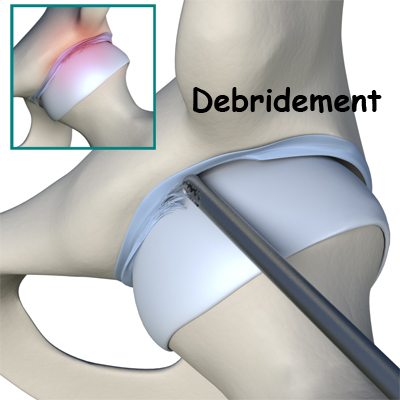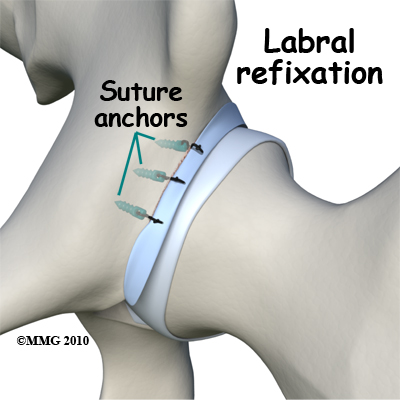

There are two distinct causes of symptomatic labral damage. Firstly high energy trauma causing a labral tear; road traffic accidents, fall from a height/horse, violent sporting injuries. In these cases the labral tissue is immediately damaged as the hip is forced beyond the normal range of motion.
The second cause of labral wear is repetitive overloading, especially combined with the gradual degeneration that comes with middle age! Pain is felt after exercise where the femoral neck rubs against the labral tissue on the rim of the acetabulum. This may occur with impact from running/jumping, or due to flexion in hockey/squash/rowing.
With age many asymptomatic individuals can be show to have worn out labral tissue. Over the age of fourty it is much more likely that the pain reprisents the onset of arthritis, than treatable labral damage. The vast majority of patients with osteoarthritis will have damaged labral tissue; in these cases this is part of the disease and it is the arthritis that should be treated as necessary.
Clinical examination may demonstrate restriction in hip movement or pain on specific movements (e.g. Flexion ADduction and Internal Rotation) A negative FADIR test does not exclude labral damage, and may be positive in early osteoarthritis or other conditions. |
Because a significant proportion of normal individuals will have worn labral tissue - and no symptoms [Acetabular labrum: MRI in asymptomatic volunteers. Cotten A, Boutry N, Demondion X, Paret C, Dewatre F, Liesse A, Chastanet P, Fontaine C. J Comput Assist Tomogr. 1998 Jan-Feb;22(1):1-7.] [Correlation of clinical and magnetic resonance imaging findings in hips of elite female ballet dancers. Duthon VB, Charbonnier C, Kolo FC, Magnenat-Thalmann N, Becker CD, Bouvet C, Coppens E, Hoffmeyer P, Menetrey J. Arthroscopy. 2013 Mar;29(3):411-9. doi: 10.1016/j.arthro.2012.10.012. Epub 2013 Jan 16.] [Identification of acetabular labral pathological changes in asymptomatic volunteers using optimized, noncontrast 1.5-T magnetic resonance imaging. Schmitz MR, Campbell SE, Fajardo RS, Kadrmas WR. Am J Sports Med. 2012 Jun;40(6):1337-41. doi: 10.1177/0363546512439991. Epub 2012 Mar 15.] - it is important to confirm the labrum as the cause of symptoms. A pain killing injection in to the hip joint is a useful way to identify the labrum is the cause of the symptoms.
Simple avoidance of the painful activity should reduce symptoms. In some cases a single pain killing injection into the hip will relieve symptoms and allow a gradual return to normal levels of activity. Some patients will get better with time and physiotherapy, although the non-surgical treatment of this condition is not widely studied [Nonsurgical Treatment of Acetabular Labrum Tears: A Case Series Paula M. Yazbek,Vanessa Ovanessian, Robroy L. Martin, Thiago Y. Fukuda. Journal of orthopaedic & sports physical therapy. May 2011 volume 41 number 5. ].


Surgical treatment to remove or reattach the damaged labral tissue and will relieve symptoms if there is no underlying arthritis or structural abnormality. This may be undertaken using keyhole arthroscopic surgery or by open techniques. If the labral damage is secondary to osteoarthritis or femoroacetabular impingement then the primary problem should also be addressed. Notes http://www.ajronline.org/doi/full/10.2214/AJR.06.0921 http://www.sciencedirect.com/science/article/pii/S0011502912001319
© Mr Gavin Holt :: CotswoldClinics.com :: Print this frame